Ask Ethan: if gravity attracts, how can a “dipole reflector” repel the Milky Way?
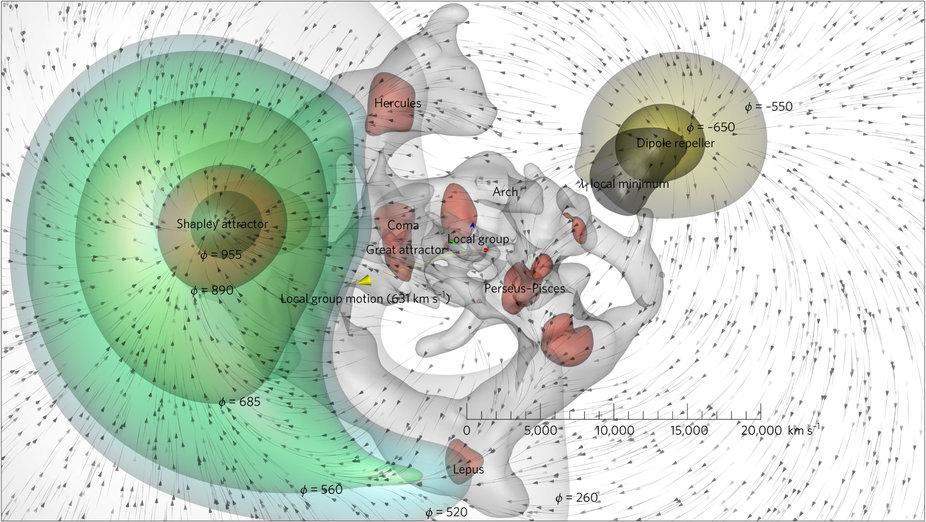
Relative attracting and repulsive effects of areas of high and low density of the Milky Way
One of the most unusual things associated with the Universe is the apparent high speed of the Milky Way. Despite the fact that the cosmic masses have recently been marked out with unprecedented accuracy, they are still not enough to give it a visible speed. The idea of the existence of a " great attractor " does not quite correspond to our observations. The masses present there are not “great” enough. But a new idea about the existence of a dipole reflector can finally explain this long-standing riddle. How can this work and what is it all about? The reader asks us about this:
What is the mechanics of the dipole reflector? How can a piece of space free of matter repel galaxies strongly enough (and generally repel)?

The expansion of space means that the farther the galaxy, the faster it moves away from us
If you look at the galaxies that are available for observation, you will see that, on average, they move away from us at a certain speed: at the speed of Hubble . The farther the galaxy, the faster the apparent speed with which it moves away from us - these are the consequences of existence in an expanding universe, governed by the General Theory of Relativity. But this is only an average. Each galaxy on top of this superimposes its own motion, known as peculiar velocity , which exists due to the gravitational influence on it of all the imperfections of the Universe.
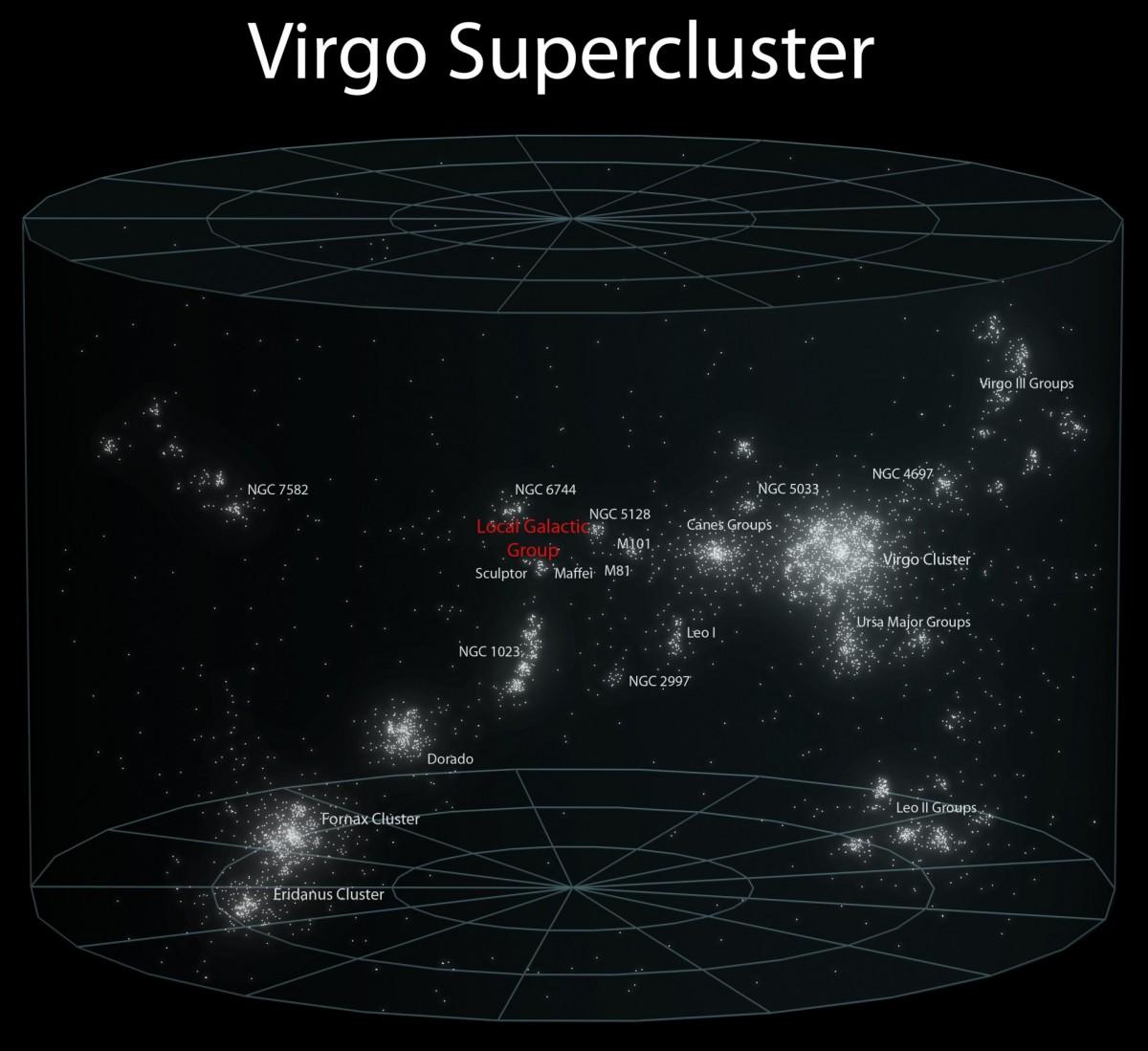
Various Virgo supercluster galaxies, grouped together. On the largest scales, the Universe is homogeneous, but on the scales of galaxies or clusters regions with high and low density dominate.
The nearest galaxy, Andromeda , is moving in our direction due to the gravitational pull of the Milky Way. Galaxies in the nearest giant cluster - the Cluster of Virgo - receive an increase in the Hubble velocity of up to 2000 km / s. By studying the relic radiation, or the microwave background of the Universe, we can measure our peculiar velocity in the Universe.

The relic radiation dipole, measured by COBE, marks our movement in the Universe relative to the resting background radiation reference frame.
This “cosmic dipole” has a redshift in one direction (we move away from it), and a blue one in the other (we are approaching it), as a result of which we can recreate the movement of the entire local group. We, Andromeda, the Triangle galaxy and everything else is moving at a speed of 631 km / s relative to the Hubble flow, and we know that gravity should be the reason. Observing the location of galaxies, we can mark out their masses and calculate the forces of their attraction.
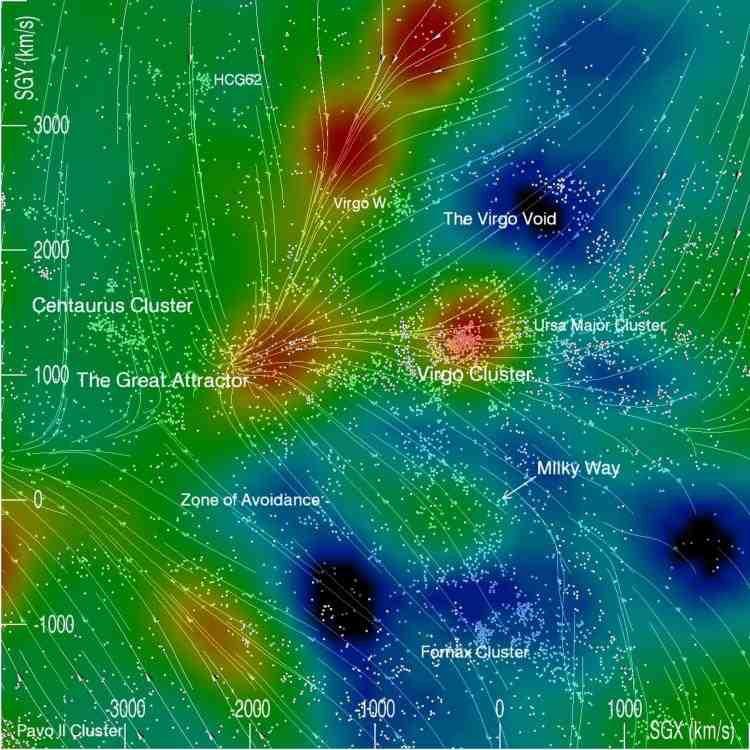
Two-dimensional cut of regions of increased (red) and low (blue / black) density of the Universe next to us
Thanks to the recent project " Space Flows ", we not only marked out the Universe closest to us with unprecedented accuracy, but also found that the Milky Way is located on the outskirts of a giant galaxy collection that attracts us to itself: Laniakei . It makes a significant contribution to our peculiar speed, but it is not enough for a full explanation. Gravitational attraction is only half the battle. And the second half refers to gravitational repulsion. Let me explain.
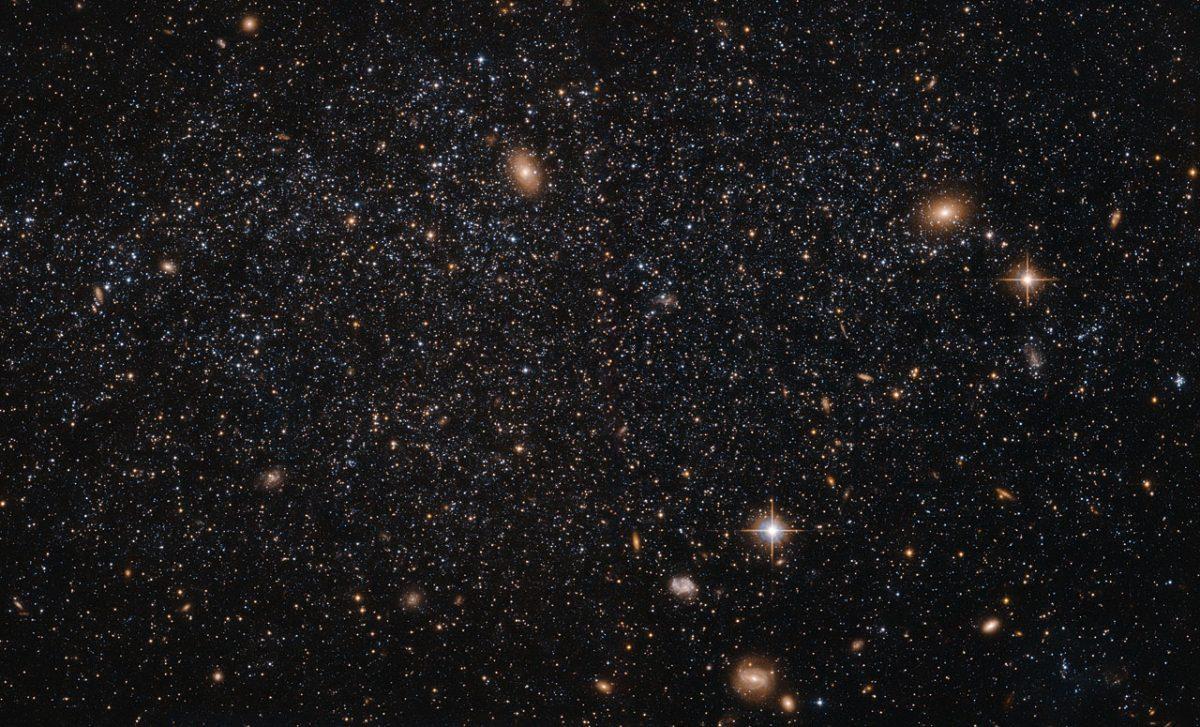
If all places and directions were equally dense, there would be no predominant attraction. But regions of increased density attract more, and lower - weaker, which creates an effective repulsion
Imagine a Universe in which equal masses are evenly distributed in all directions. In all directions, in all places, the Universe is filled with matter of the same density. If you put an extra mass at a certain distance to your left, the gravitational pull will attract you to the left.
But if you remove a part of the mass at the same distance to your right, you will still be attracted to the left! In a perfectly homogeneous universe, you will be equally attracted in all directions, and these forces of attraction will be mutually destroyed. But if you remove a little mass in one direction, it will not attract you as much, so you will be pulled in another direction.
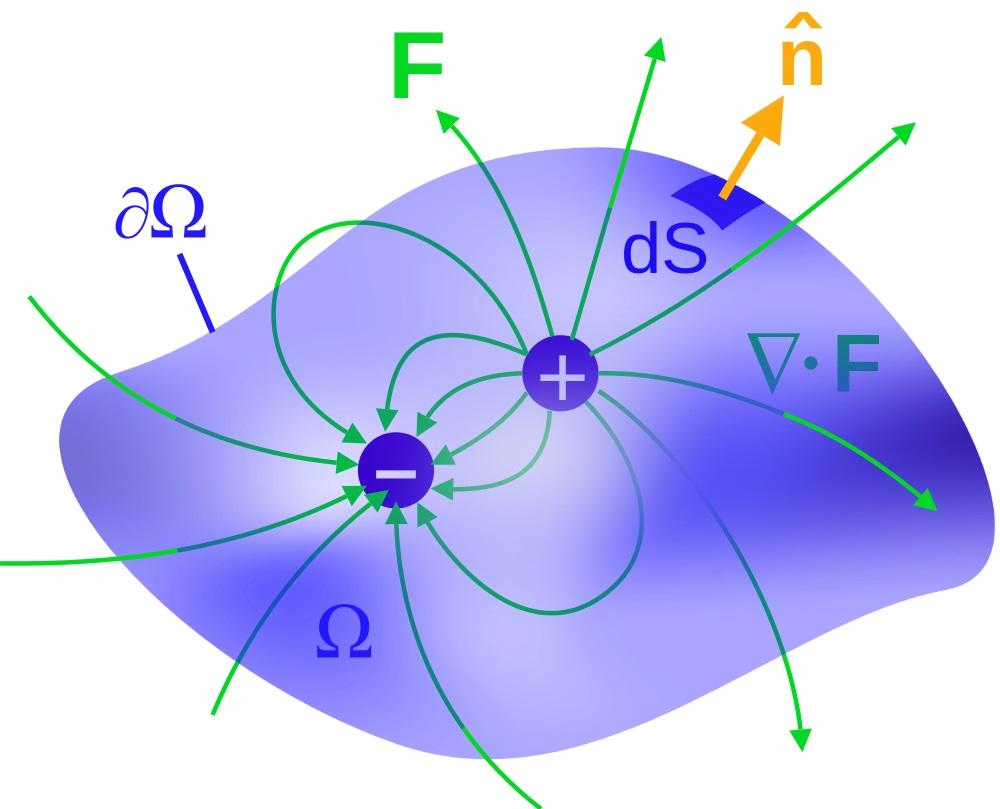
Dipoles are most commonly found in electromagnetism.
Technically, this is not a gravitational repulsion, since gravity always only attracts, but since you are attracted less in one direction than others, the region with low density actually works as a gravitational repeller. You can even imagine a situation in which, on the one hand, you will have a region with a higher density, and on the other, with a lower density. You will simultaneously experience increased attraction on the one hand and increased “repulsion” on the other. This is what the idea of a dipole reflector describes.
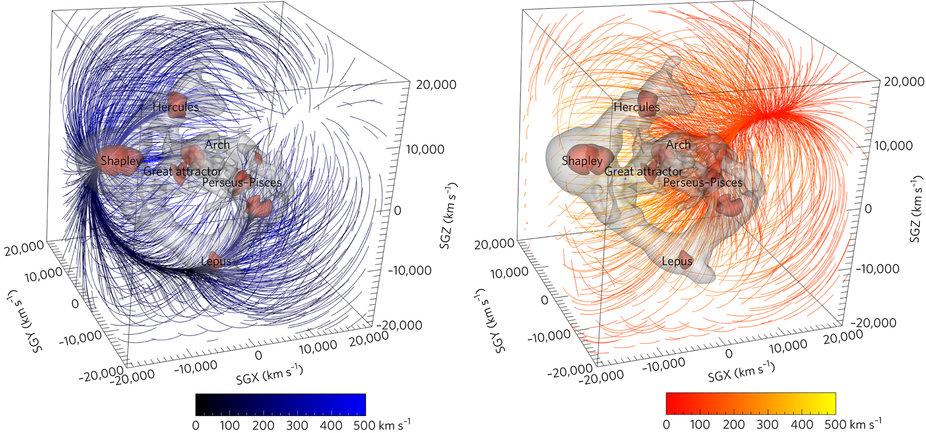
Gravitational attraction (blue) of high density regions and relative repulsion (red) of low density regions affecting the Milky Way
It is difficult to measure exactly where a region of low density is located, since there are usually no galaxies in regions of medium and low density. But the newly discovered cosmic void , located not far from us, and located on the other side of us in relation to the large cluster of galaxies attracting us, is responsible for 50% of our peculiar movement - it was just that there were not enough in the calculations, where only high density regions participated .
Finally, we were able to find a solution to this mystery - why our Sun, galaxy and local group move exactly as they move. Gravity never pushes mass away, but on the one hand, a decrease in attraction with respect to the others behaves in the same way as repulsion. We can distinguish between attraction in one direction and repulsion in another, but in astrophysics it is all the same: forces and accelerations. It has nothing to do with dark energy or the mysterious fifth interaction ; it is simply an excess of matter in one direction and a lack of it in the opposite. As a result, we move through the Universe in our special peculiar way.
Ethan Siegel - astrophysicist, popularizer of science, blog Starts With A Bang! He wrote the books Beyond The Galaxy , and Treknologiya: Star Trek Science [ Treknology ].
All Articles